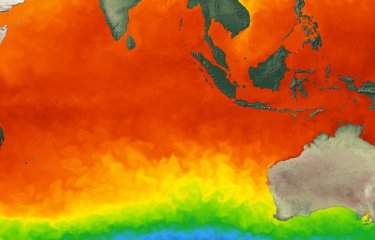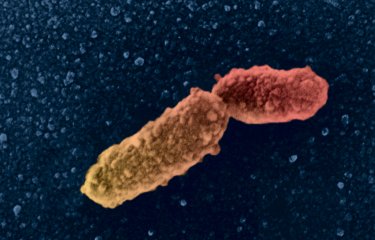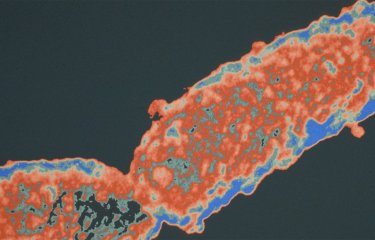In a study coordinated by the Institut Pasteur, scientists describe the dynamics of the whooping cough epidemic in 2024 in France, the worst in 25 years. The scientists also sequenced the genome of almost 70 bacterial isolates collected during the outbreak from January to mid-2024. These analyses allowed them to put forward several theories explaining the current resurgence in circulation of the disease.
Whooping cough is a highly contagious respiratory disease that can be severe or even fatal for vulnerable individuals, such as unvaccinated infants. People often wrongly assume that whooping cough is a disease of the past, but WHO estimates that every year there are 40 million cases and 300,000 deaths worldwide. While vaccination has significantly reduced the number of cases in France, whooping cough continues to circulate in a cyclical pattern, with peaks observed every three to five years between 1997 and 2019.
The largest whooping cough outbreak for at least 25 years
Since the COVID period, the regularity of whooping cough cycles has been disrupted. The cyclical peak that was expected in 2022 or 2023 did not occur. In France, as in other European countries, the period that coincided with the COVID-19 pandemic also saw a marked reduction in the circulation of Bordetella pertussis, the bacteria responsible for most cases of whooping cough.
But since the start of 2024, the situation has been radically different in France. Between January 1 and May 31, 2024, 5,616 cases of Bordetella pertussis were recorded. According to Santé publique France (SpF), between January 1 and September 16, 2024, 35 people, mostly young children, died after contracting whooping cough.
The numbers of people infected and dying from whooping cough since the start of 2024 are much higher than the figures recorded in previous outbreaks, indicating an unprecedented resurgence.
Different whooping cough bacteria from those in the pre-COVID period
Why have cases risen so sharply? In a recent study published and coordinated by scientists from the Institut Pasteur, conducted in collaboration with SpF and community-based diagnostic laboratories, several theories are put forward. First, the lockdowns and hygiene and distancing measures introduced during the COVID period limited our exposure to viruses and pathogenic bacteria, including those responsible for whooping cough. Since immunity gradually wanes over time, these measures, together with the relatively low level of the most recent peaks, progressively reduced the public's overall immunity to the disease, which is generally maintained by often asymptomatic infections that serve as natural "boosters" among the vaccinated population. When whooping cough made its return, it encountered a more immunologically "naive" population than in previous peaks.
But this may not be the only explanation. To shed more light on the situation, the scientists sequenced the genome of several bacterial isolates of Bordetella pertussis taken from individuals infected in 2024. "We isolated and performed whole genome sequencing on 67 cases of B. pertussis, and we specifically looked for the production of vaccine antigens. We found that 66 isolates of B. pertussis produced pertactin and 56 produced the adhesin FIM2, unlike in the pre-COVID years when these two antigens were observed more rarely," explains Sylvain Brisse, Head of the Biodiversity and Epidemiology of Bacterial Pathogens Unit and the National Reference Center for Whooping Cough and other Bordetella Infections. These two proteins produced in the vast majority of the isolates analyzed are virulence factors targeted by vaccination: they play an essential role in enabling the bacteria to adhere to cells in the respiratory epithelium and in regulating the host response. The predominance of these proteins in the current outbreak, contrary to what was observed before the COVID period, could also explain the current high level of circulation of whooping cough.
The scientists made a final important observation: for the first time in France since 2011, they identified a bacterial isolate resistant to macrolides, the first-line antibiotics used to treat whooping cough. This type of isolate is very rare in France and in Europe in general, although it is observed more frequently in Asia and is widespread in China. This additional discovery further emphasizes the importance of closely monitoring the bacterial strains responsible for whooping cough.
Resurgence of Bordetella pertussis, including one macrolide-resistant isolate, France, 2024, Eurosurveillance, August 1, 2024
Carla Rodrigues1,2,* , Valérie Bouchez1,2,* , Anaïs Soares3 , Sabine Trombert-Paolantoni4 , Fatima Aït El Belghiti5 , Jérémie F Cohen6,7 , Nathalie Armatys1,2 , Annie Landier1,2 , Thomas Blanchot3 , Marie Hervo3 , REMICOQ study group8 , Julie Toubiana1,2,6,** , Sylvain Brisse1,2,**
1 Institut Pasteur, Université Paris Cité, Biodiversity and Epidemiology of Bacterial Pathogens, Paris, France
2 National Reference Center for Whooping Cough and other Bordetella infections, Institut Pasteur, Paris, France
3 Laboratoire Eurofins Biomnis, Lyon, France
4 Laboratoire Cerba, Saint Ouen l’Aumône, France
5 Santé publique France, Infectious Diseases Department, The French Public Health Agency, Saint-Maurice, France
6 Department of General Pediatrics and Pediatric Infectious Diseases, Université Paris Cité, Hôpital Necker-Enfants Malades, APHP, Paris, France
7 Center for Research in Epidemiology and Statistics (Inserm UMR 1153), Université Paris Cité, Paris, France
8 The members of the REMICOQ study group are listed under Collaborators
* These authors contributed equally to this work and share first authorship.
** These authors co-supervised the work and share last authorship.








